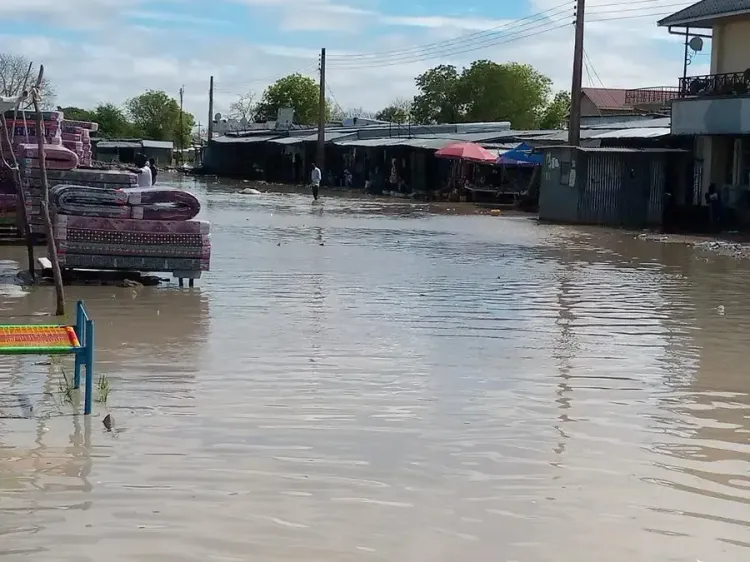How Are Floods Impacting South Sudan? UN Reports 19 Deaths and 640,000 Affected

Synopsis
Key Takeaways
- 19 fatalities reported due to flooding.
- 639,225 individuals affected across 26 counties.
- 175,000 people displaced, seeking higher ground.
- Increase in health risks such as malaria and diarrhea.
- 7.7 million people facing acute hunger.
Juba, Oct 4 (NationPress) Severe flooding triggered by relentless rainfall in South Sudan has resulted in 19 fatalities and impacted approximately 639,225 individuals across 26 counties in six states, according to a report from the United Nations (UN) humanitarian agency.
The UN Office for the Coordination of Humanitarian Affairs (OCHA) disclosed on Friday (local time) that nearly 175,000 people have been forced to evacuate, seeking refuge on elevated terrain in 16 counties.
OCHA warned that health threats are escalating, with rising incidents of malaria, respiratory illnesses, and diarrhea, as detailed in its most recent humanitarian report released in Juba, the capital of South Sudan.
At least 121 health facilities have been affected, with reports of 144 snake bites and 3,391 cases of malnutrition across 11 counties, as per reports from the Xinhua news agency.
This report follows a statement from the global charity Save the Children, which indicated that around 1.4 million individuals in South Sudan are at risk of flooding this year, with forecasts predicting above-average rainfall for October and November.
Save the Children also noted an uptick in waterborne diseases and snake bite incidents, exacerbating public health issues.
Christopher Nyamandi, the country director for Save the Children in South Sudan, stated that the hunger crisis is worsening and remains underreported, despite being among the most severe globally.
"What lies ahead for children in South Sudan could be catastrophic. The heavy rainfall has already submerged towns and is expected to continue for weeks," Nyamandi remarked.
He further explained that cuts to aid have disrupted the charity's operations, leading to a $3.1 million budget reduction in spring, resulting in job cuts in nutrition and child protection programs, and limited supplies.
Communities have suffered significant losses, including farmland, livelihoods, homes, and access to education and healthcare, with 379,000 children and adults displaced by rising waters.
This combination of crises has sparked food shortages nationwide: 7.7 million people are facing acute hunger, and 2.3 million children under five are at risk of acute malnutrition.
Save the Children reported that approximately 83,000 individuals are experiencing famine-like food shortages, particularly in the Upper Nile region.









